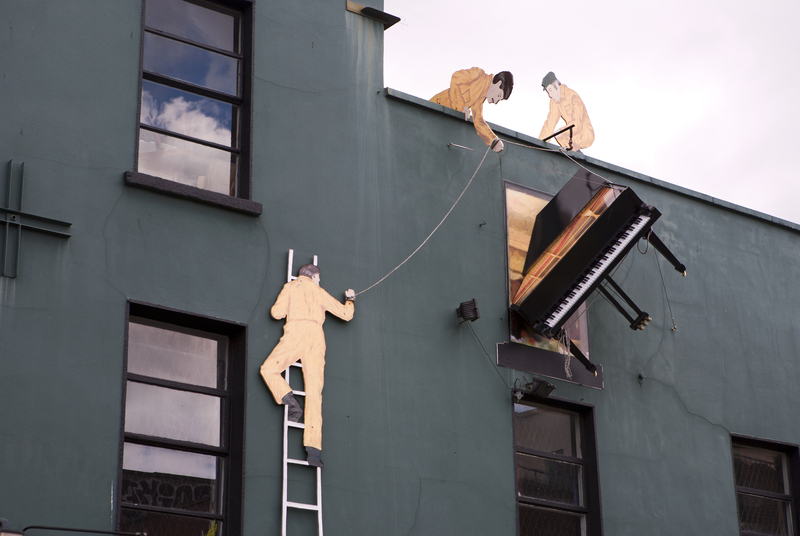Keep Your Freezer Safe: Best Practices for Storage
Posted on 28/06/2025
Keep Your Freezer Safe: Best Practices for Storage
Freezers are essential appliances in modern homes, helping us preserve food, reduce waste, and save money by buying in bulk. But are you making the most out of your freezer? Improper storage can lead to freezer burn, energy inefficiency, and even harmful bacteria growth. In this comprehensive guide, you'll discover the best practices for freezer storage to keep your frozen foods fresh, your appliance running smoothly, and your family safe.
Why Safe Freezer Storage Matters
Proper freezer storage isn't just about maximizing space. It's about food safety, energy efficiency, and cost savings. When your freezer is organized and foods are well-packaged, you'll:
- Prevent cross-contamination and spoilage
- Extend the shelf life of your frozen foods
- Reduce the risk of foodborne illnesses
- Find what you need faster
- Save money by minimizing food waste
Let's explore the top freezer storage tips to help you keep your freezer safe and efficient.

Freezer Organization: Set Up for Success
1. Start With a Clean Slate
Before organizing or restocking your freezer, always begin with a thorough cleaning. Unplug your appliance, remove all items, and check for expired or freezer-burned food. Wipe down all surfaces with warm, soapy water and dry thoroughly before plugging it back in.
2. Know Your Freezer Zones
Most freezers have areas with different temperature fluctuations. For safe freezing and storage, follow these general guidelines:
- Back and bottom: Coldest, best for meats, fish, poultry, and items that need to stay frozen solid
- Door: Warmest area, ideal for foods with a longer freezer life, like nuts, butter, or alcohol
- Shelves or baskets: Mid-level, perfect for fruits, vegetables, breads, and prepared meals
3. Use Clear Containers and Label Everything
Transparency is key for effective freezer organization. Opt for clear, airtight containers or resealable freezer bags. This way, you can quickly identify what's inside. Always label each item with the food name and date of freezing -- you'll never mistake that mystery package again!
Safe Freezer Storage: Best Practices
1. Set the Correct Temperature
To ensure food stays safe in your freezer, the temperature should always be at or below 0?F (-18?C). Use an appliance thermometer to check regularly. Consistent cold keeps bacteria at bay and food at peak quality.
2. Package Foods Properly
- Air-tight is right: Oxygen causes freezer burn and shortens shelf life. Use vacuum sealers or squeeze out as much air as possible from bags and containers.
- Double wrap when needed: For meats or foods to be stored long-term, double-wrap with plastic wrap, foil, or freezer paper before placing in a bag or container.
- Flat is better: Freeze soups and stews in flat bags to save space and ensure faster, more even thawing.
3. Never Overfill or Underfill Your Freezer
A well-stocked freezer runs more efficiently than a nearly empty one, since cold foods help one another stay frozen. However, don't overpack! Good air circulation is crucial. Aim for about 75-85% full.
4. First In, First Out Method (FIFO)
Arrange foods so older items are at the front, and use them before newer additions. This proven system keeps your frozen goods rotating and reduces waste.
5. Watch for Freezer Burn
Freezer burn happens when air reaches food and causes dehydration. While not dangerous, it affects taste and texture. To prevent freezer burn:
- Keep your freezer at 0?F or lower
- Use airtight packaging
- Avoid fluctuating temperatures by keeping the door closed as much as possible
What Foods Freeze Best?
Not all foods are created equal when it comes to freezing. Here's a quick rundown of foods that freeze well:
- Meats, poultry, fish (raw or cooked)
- Bread and baked goods
- Fruits and vegetables (most should be blanched first)
- Eggs (beaten, whites, or yolks, but not in the shell)
- Soups, stews, casseroles, and sauces
- Cooked grains and pasta
- Shredded cheese and butter
Foods to Avoid Freezing
Some items don't freeze safely or well, due to changes in texture, separation, or risk of bacterial growth. Avoid freezing:
- High-water content produce, like lettuce, cucumbers, and raw potatoes
- Cream-based sauces or custards (may separate)
- Soft cheeses, like brie or ricotta
- Eggs in the shell
- Sauces thickened with cornstarch or flour (may change texture)
- Fried foods (they may become soggy)
Safe Defrosting and Thawing Tips
Never Thaw Foods at Room Temperature
Safe thawing protects against harmful bacteria. The best methods are:
- Overnight in the refrigerator: Safest and best for quality
- Cold-water bath: In a leak-proof bag submerged in cold water, change water every 30 minutes
- Microwave: If you'll be cooking immediately after
Never refreeze thawed food unless it was thawed in the refrigerator and hasn't reached room temperature.
Maintenance: Freezer Safety and Efficiency
1. Regularly Check the Door Seal
An airtight freezer door seal is critical to maintain consistent temperatures. Test the seal by closing the door over a piece of paper -- if you can pull it out easily, it's time to replace the gasket.
2. Defrost Your Freezer Periodically
Manual-defrost freezers need attention when ice buildup exceeds 1/4 inch. An icy freezer works harder and uses more energy.
3. Monitor Power Outages
If you lose power, a full freezer will keep food frozen for about 48 hours, and a half-full freezer for about 24 hours. Keep the door closed as much as possible. If in doubt whether food is safe after a blackout, check for ice crystals and never taste to check for safety -- when in doubt, throw it out!

Frequently Asked Questions About Freezer Storage Safety
How long can you store food in the freezer?
While freezing keeps food safe indefinitely at 0?F, quality declines over time. Here are rough timelines:
- Meat & Poultry: 6-12 months
- Fish: 3-6 months
- Baked goods: 2-4 months
- Fruits & Vegetables: 8-12 months
Is freezer burn dangerous?
No, freezer burn isn't dangerous, but it can impact flavor, texture, and appearance. Proper wrapping and storage help minimize freezer burn.
Can I freeze cooked leftovers?
Absolutely. Promptly freeze leftovers within 2 hours, in small, shallow containers to allow for rapid, even freezing and prevent bacterial growth.
How to organize a chest freezer for maximum safety?
Use labeled baskets and bins for different food groups, stack flat bags, and keep a chart taped to the lid showing contents and freezing dates. Make sure raw meats are always at the bottom to prevent drips on other foods.
Conclusion: Keeping Your Freezer Safe for the Long Haul
With the right practices, your freezer can be a powerful tool to save time, cut costs, and keep your family healthy. To ensure freezer safety and best storage:
- Keep your freezer well-organized and regularly cleaned
- Maintain the correct temperature (0?F or lower)
- Use proper packaging and labeling
- Follow safe thawing practices
- Don't overload or underload the freezer
By applying these best practices for freezer storage, you'll minimize waste, keep your food fresh, and protect your health -- all while making your daily life easier. Clean out your freezer today and start building safer, smarter storage habits!



